G.B. Poletto (1915-1988) was one of the most prolific set photographers that worked in the Italian cinema of the 1950s and 1960s. In 1950, Titanus, one of the major studios, offered him an exclusive contract, which committed him to be the still photographer for all the films produced by the studio. Poletto worked with such famous directors as Roberto Rossellini, Federico Fellini, and Luchino Visconti, but he also photographed many genre films, including the classic romantic comedies Pane, amore e fantasia/Bread, Love and Dreams (1953) with Gina Lollobrigida, and Poveri ma belli/Poor But Beautiful (Dino Risi, 1957), starring Marisa Allasio. His photos were used for countless European film star postcards.

German postcard by Universum-Film Aktiengesellschaft (UFA), Berlin-Tempelhof, no. CK-174. Retail price: 30 Pfg. Photo: G.B. Poletto / UFA. Marisa Allasio
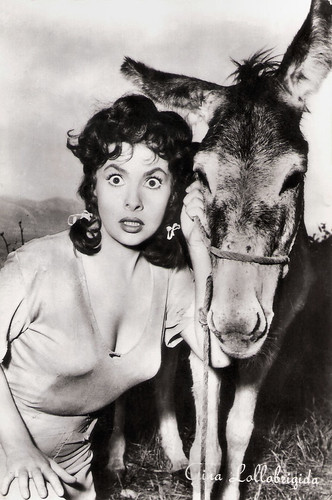
Yugoslavian postcard by NPO, no. G5. Photo: G.B. Poletto. Gina Lollobrigida and donkey in Pane, amore e fantasia /Bread, Love and Dreams (Luigi Comencini, 1953).

Italian postcard in the I Carabinieri nel Cinema series. Photo: Titanus. Photo: G.B. Poletto. Roberto Risso, Gina Lollobrigida, and Vittorio De Sica in Pane, amore e gelosia/Bread, Love and Jealousy (Luigi Comencini, 1954).

Italian postcard by Casa Editr. Ballerini & Fratini, Firenze (B.F.F. Edit.), no. 3197. Photo: G.B. Poletto. Titanus. Antonio Cifariello in Pane, amore e...../Scandal in Sorrento (Dino Risi, 1955).
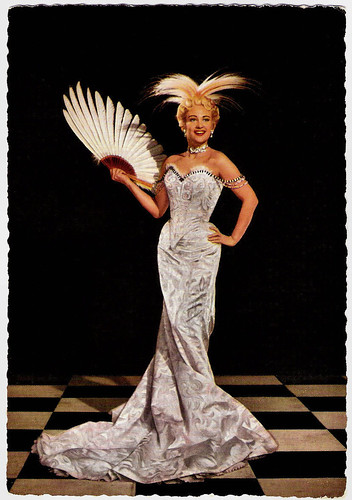
German postcard by UFA, Berlin-Tempelhof, no. 58. Retail price: 50 Pfg. Photo: G.B. Poletto / UFA. Martine Carol
Giovanni Battista Poletto was born in Rome in 1915. His parents were Vittorio Poletto, originally from Rovigo, and Assunta Battistini, from Cesena. He attended elementary school in the Pinciano district, where he was born, and once he obtained a middle school license, he decided not to continue his studies.
In the 1930s he enrolled in a course for aviation photographers organised by the Air Force Ministry. Shortly thereafter, he began his career as a professional photographer at Ala Littoria, taking aerial photographs. During the war, he served in the aeronautics as a laboratory photographer. Transferred to Volta Mantovana, in 1943, he met the eighteen-year-old Paola Panizza, whom he married in 1946. Four children were born from the wedding: Donatella (1947), Carlo (1949), Laura (1953), and Alessandra (1958).
Once back in Rome with his wife, Poletto abandoned aerial photography in favour of reportage photography. He began to collaborate with such magazines as L’Europeo and Oggi and started his first contact with the world of cinema. In 1949 he met Roberto Rossellini, who wanted him as a set photographer of Stromboli, terra di Dio/Stromboli (Roberto Rossellini, 1950), starring Ingrid Bergman.
In 1950, the producer Goffredo Lombardo, head of one of the major studios, Titanus, offered him an exclusive contract, which committed him to be the still photographer for all the films produced by the studio. To cope with the growing amount of work, Poletto was forced to significantly expand the number of employees of his Agenzia Poletto - opened just before in the centre of Rome, in Via della Mercede 16 - which came to count 19 employees including photographers and printers.
For 'G.B. Poletto' - as he used to sign his photos - the first half of the 1950s was very intense on a professional level, with an average coverage of eleven sets per year. In 1951, he worked twice with the director and writer Mario Soldati, for the comedy O.K. Nerone/O.K. Nero (1951) starring Walter Chiari and Silvana Pampanini, and for È l'amor che mi rovina/It is love that ruins me (1951), with Chiari and Lucia Bosé.
In 1952, he photographed two episodes of Les sept péchés capitaux/The Seven Deadly Sins: L'Envie/Envy by Roberto Rossellini, and L'Avarice et la colère/Avarice and Anger by Eduardo De Filippo. With De Filippo, he also worked in the same year in the comedies Marito e moglie/Husband and wife (1952) and Ragazze da marito/Married Girls (1952).
The following year, he witnessed the directorial debut of Antonio Pietrangeli with Il sole negli occhi/The sun in his eyes (1953), for which the director earned a Silver Ribbon. He also made the still photos of Un marito per Anna Zaccheo/A husband for Anna Zaccheo (1954) by Giuseppe De Santis with whom he also collaborated for Uomini e lupi/Men and Wolves (Giuseppe De Santis, 1957) and Roberto Rossellini's Viaggio in Italia/Journey to Italy (1954), with whom he had built up mutual esteem and friendship in the meantime.
He resumed the sets of Pane, amore e fantasia/Bread, Love and Dreams (Luigi Comencini, 1953) with Vittorio De Sica and Gina Lollobrigida, and Poveri ma belli/Poor But Beautiful (Dino Risi, 1957), starring Marisa Allasio, Maurizio Arena, and Renato Salvatori. Of these popular 'sagas', he photographed all the sequels too.
Poletto also collaborated with Michelangelo Antonioni for La Signora senza Camelie/The Lady Without Camelias (1953), of which the photos depicting the young protagonist, Lucia Bosé, hover in memory.
In the same year, he worked on the set of Quand tu liras cette lettre/When You Read This Letter (Jean-Pierre Melville, 1953) with Juliette Gréco, and of the anthology film Siamo donne (Gianni Franciolini, Alfredo Guarini, Roberto Rossellini, Luchino Visconti, Luigi Zampa, 1953), starring Alida Valli, Ingrid Bergman, Isa Miranda, and Anna Magnani, of which he did all five episodes.
At the same time, he was on the sets of important authors of genre films: Raffaello Matarazzo, a prolific director of such melodramas as Chi è senza peccato..../Who is without sin ... (1952) and Torna!/Tears of Love (1954), and comedy directors like Camillo Mastrocinque for Attanasio, cavallo vanesio/Athanasius, the vain horse(1953) and Steno for Mio figlio Nerone/My son Nero (1956).
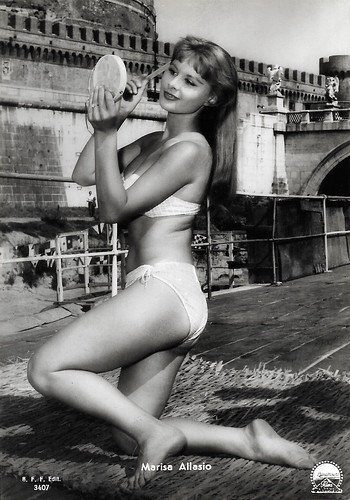
Italian postcard by Casa Editr. Ballerini & Fratini, Firenze, no. 3407. Photo: G.B. Poletto / Paramount / Titanus. Marisa Allasio in Poveri ma belli/Poor but beautiful (Dino Risi, 1957).
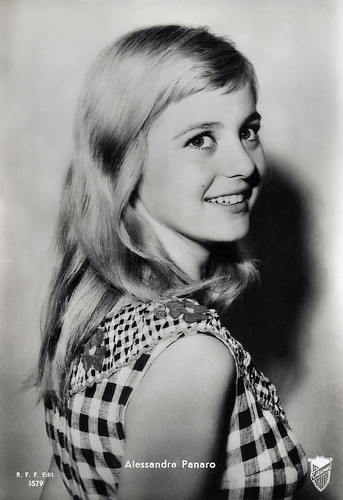
Italian postcard by Casa Edit. Ballerini & Fratini, Firenze (B.F.F.), no. 3579. Photo: G.B. Poletto / Titanus. Alessandra Panaro.
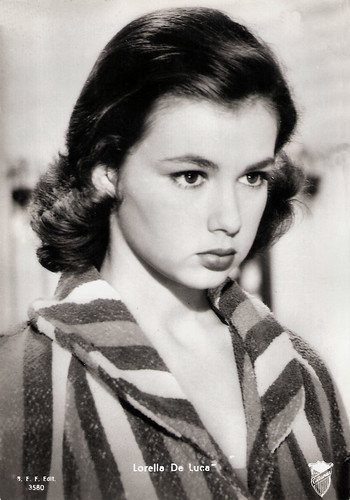
Italian postcard by B.F.F. Edit. (Casa Editr. Ballerini & Fratini, Firenze), no. 3580. Photo: G.B. Poletto / Titanus. Lorella De Luca.

Italian postcard by B.F.F. Edit. (Casa Editr. Ballerini & Fratini, Firenze), no. 3712. Photo: G.B. Poletto / Titanus. Renato Salvatori in Poveri Millionari/Poor Millionaires (Dino Risi, 1959).
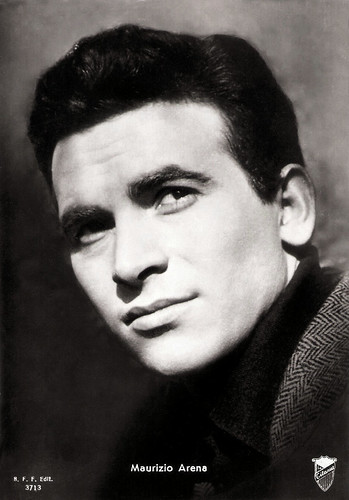
Italian postcard by Casa Editr. Ballerini & Fratini, Firenze, no. 3713. Photo: G.B. Poletto / Titanus. Maurizio Arena in Poveri milionari/Poor Millionaires (Dino Risi, 1958).
G.B. Poletto was among the photographers who contributed to launching Sophia Loren as one of the main divas of Italian cinema: the set photos of Il segno di Venere/The Sign of Venus (Dino Risi, 1955) and the promotional photos of Peccato che sia una canaglia/Too Bad She's Bad (Alessandro Blasetti, 1955), are still today among the most recognisable shots of the actress.
Titanus was always careful to diversify its offer, producing films by Rossellini, Federico Fellini, Luchino Visconti, high budget films in French and American co-production, but also Italian comedies, melodramas, adventure films, Peplums. This mixture of author films and more widely consumed films reverberated on Poletto's work and represented a constant in his work, especially in the second part of his career.
From the mid-sixties, he often photographed the 'Musicarelli', hugely popular musical comedies starring the most famous pop singers of the time. Among these are Non son degno di te/I am not worthy of you (Ettore Maria Fizzarotti, 1965) with Gianni Morandi, and Non stuzzicate la zanzara/Don't whet the mosquito (Lina Wertmüller, 1967), starring Rita Pavone.
In his professional career, he also met Alberto Lattuada, with whom he collaborated for La spiaggia/Riviera (Alberto Lattuada, 1954) with Martine Carol, and Scuola elementare/Elementary school (Alberto Lattuada, 1955). The relationship with the Milanese director continued in 1960 with Lettere di una novizia/Letters by a Novice (Alberto Lattuada, 1960) and I Dolci decanni/Sweet Deceptions (Alberto Lattuada, 1960). The protagonist of this last film was Catherine Spaak, in the role of a teenager in love with a man much older than her. The film caused a sensation and was subjected to a very long censorship odyssey until 1964 when Lattuada and the producer Lombardo were acquitted of the accusation of obscenity.
In one of his few interviews, Poletto underlined how in Italy, unlike what happened in American cinema, the photographer was called to simultaneously cover multiple roles: to produce the promotional material of the film (envelopes for the press, posters) he had to faithfully resume what had been shot by the camera, preserving its angle of observation, and at the same time had to "document the birth of the film by shooting the director, the actors, the technicians at work or in moments of pause".
The 'still photography', as it was commonly understood, therefore constituted only a part of the photographer's overall work, not including the less quoted 'set photography' which left him more expressive freedom and which dissociated himself from the idea of cinema as a machine producing illusions "revealing 'the artifice'". Initially, the set, as the main place of the cinematographic creation, was not crossed by the photographer's eye. Later, Poletto began to show the space in which the film was physically made to further increase its charm and the power of seduction.
His colour images of Giulietta degli spiriti/Juliet of the Spirits (Federico Fellini, 1965) are famous. Poletto, widening the frame, shows the 'trick' hidden by the camera: the crane that supports the swing on which Sandra Milo swirls. He made photos of various kinds of sets, but it is clear that his gaze was mainly - and not only for evident advertising purposes - to the actors, the directors, and the relationship that was born between them during filming.
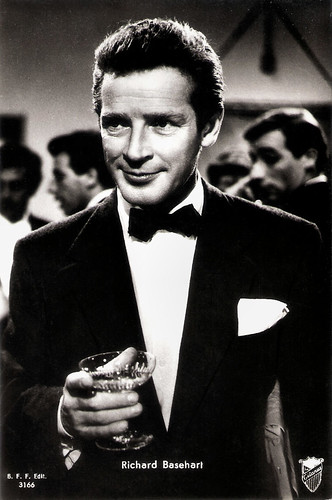
Italian postcard by B.F.F. Edit., no. 3166. Photo: G.B. Poletto /Titanus. Richard Basehart in Il bidone/The Swindlers (Federico Fellini, 1955).

German postcard by Rüdel-Verlag, Hamburg-Bergedorf, no. 2141. Photo: G. B. Poletto / J. Arthur Rank Film. Jean Marais in Le notti bianche/ White Nights (Luchino Visconti, 1957).

German postcard by Ufa, Berlin-Tempelhof, no. FK 3486. Photo: G.B. Poletto. Marcello Mastroianni and Maria Schell in Le notti bianche/ White Nights (Luchino Visconti, 1957).

German postcard by Ufa, Berlin-Tempelhof, no. FK 3515. Photo: G.B. Poletto / Ufa. Elizabeth Taylor.
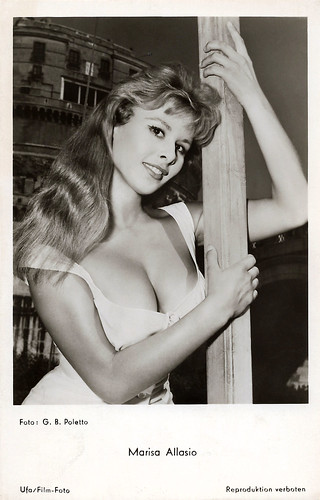
German postcard by Ufa/Filmfoto, Berlin-Tempelhof, no. FK 3476. Photo: G.B. Poletto. Marisa Allasio.
Giovanni Battista Poletto himself told how the two masters Luchino Visconti and Federico Fellini related with him on the set in a totally different way: how much the one was inclined to give him all the space and time necessary to take the photos, so much the other was also annoyed by the only 'click' of the machine (despite the invention of the 'blimp' had significantly attenuated the click noise).
He worked with the Rimini director in Il bidone (Federico Fellini, 1955), with Richard Basehart and Broderick Crawford, and in Roma/Rome (Federico Fellini, 1972), an autobiographical tale in which Gore Vidal and Anna Magnani appear, in her latest film appearance. It is no coincidence that her images were selected for an exhibition dedicated to the actress in the Palazzo Valentini, Rome in 2008.
The relationship with Luchino Visconti was also intense: from Siamo donne to the masterpiece Il gattopardo/The Leopard (Luchino Visconti, 1963), the sum of his professional career. Precisely on this particularly long and demanding set, he chose to bring the family with him, although he usually kept work separate from his private world. In 2013, the photos of the making of the film were exhibited on the occasion of an important exhibition organised to celebrate the fiftieth anniversary of the film in Palazzo dei Normanni, Palermo.
1963 was a year of transition: the Titanus, due to the enormous production costs of Sodoma and Gomorrah (Robert Aldrich, 1962) and Il Gattopardo, went bankrupt as a production company continuing to deal only with the distribution.
The most important phase of Poletto's career therefore ended, coinciding with the heyday of Italian cinema, during which he was able to photograph works by authors such as Francesco Maselli (Gli sbandati/Abandoned, 1955), Mario Monicelli (Un eroe dei nostri tempi/A Hero of Our Times, 1955; Risate di gioia/The Passionate Thief, 1960), Vittorio De Sica (Il tetto/The Roof, 1956), Valerio Zurlini (Estate violenta/Violent Summer, 1959; La ragazza con la valigia/Girl with a Suitcase, 1961; Cronaca familiare/Family Diary, 1962), Nanni Loy (Audace colpo dei soliti ignoti/Fiasco in Milan, 1959; Le quattro giornate di Napoli/The Four Days of Naples, 1962), Francesco Rosi (I magliari/The Swindlers, 1959), Elio Petri (L'assassino/The Assassin, 1961; I giorni contati/His Days Are Numbered, 1962), Ermanno Olmi (Il posto/The Job, 1961), and Dino Risi (Operazione San Gennaro/The Treasure of San Gennaro, 1966).
His professional career seemed in some ways to follow the fate of still photography: it experienced its peak period in the 1950s and early 1960s and its progressive decline between the late 1960s and early 1970s, with the growing popularity of the television and the consequent decrease in budgets for cinema. On the contrary, the activity of his printing laboratory continued to be intense, often allowing him to indulge his natural inventiveness: in 1968 he was asked for a poster to advertise C'era una volta il West/Once Upon a Time in the West (Sergio Leone, 1968) and, for realising it, after a meticulous preparation as it was in his style, he created a special enlarger. He had repeatedly expressed his displeasure at not having followed in the footsteps of his maternal grandfather, an inventor of machinery.
In the second phase of his career, he still filmed genre films (Musicarelli in the first place), but he also documented the sets of some significant works such as Io la conoscevo bene/I knew her well (Antonio Pietrangeli, 1965) with Stefania Sandrelli, the Spaghetti Western I lunghi giorni della vendetta (Faccia d'angelo)/Days of Vengeance (Florestano Vancini, 1967) starring Giuliano Gemma, Romeo and Juliet (Franco Zeffirelli, 1968), and La prima notte di quiete/Indian Summer (Valerio Zurlini, 1972), starring Alain Delon.
The last film he worked for was the acclaimed comedy-drama Pane e cioccolata/Bread and Chocolate (Franco Brusati, 1973), starring Nino Manfredi, his close friend. Until the end, he continued to devote himself full time to his photographic laboratory, where his daughter Donatella had started working since 1966. Giovanni Battista Poletto died in Rome in 1988. He was 72.
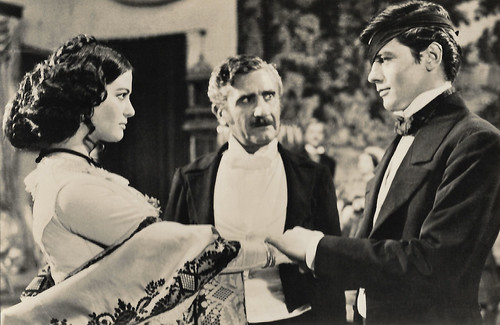
Small Czech collectors card by Pressfoto, Praha (Prague), 1965, no. S 101/6. Photo: G.B. Poletto. Claudia Cardinale, Paolo Stoppa, and Alain Delon in Il gattopardo/The Leopard (Luchino Visconti, 1963).
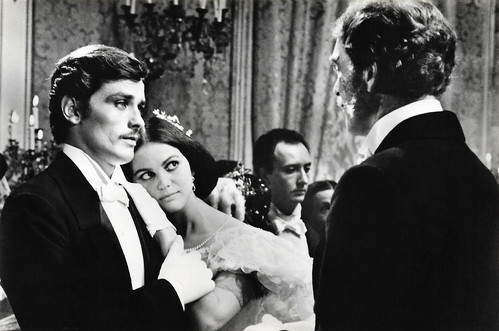
Czech postcard by UPTF / Pressfoto, Praha (Prague), no. C 198, 1965. Photo: G.B. Poletto. Alain Delon, Claudia Cardinale, and Burt Lancaster in Il gattopardo/The Leopard (Luchino Visconti, 1963).

Czech postcard by Pressfoto, Praha (Prague). Photo: G.B. Poletto. Alain Delon and Claudia Cardinale in Il gattopardo/The Leopard (Luchino Visconti, 1963). Collection: Carla Bosch.
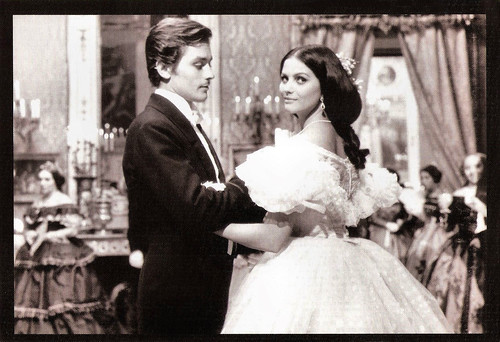
Vintage card. Photo: G.B. Poletto. Alain Delon and Claudia Cardinale in Il gattopardo/The Leopard (Luchino Visconti, 1963).
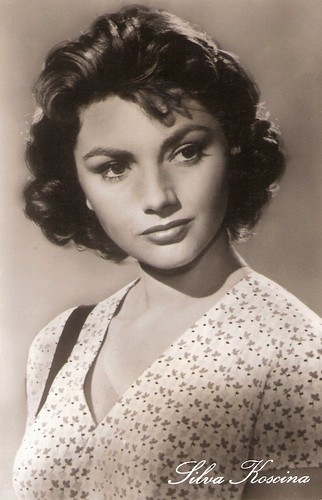
East-German postcard by VEB Progress Film-Vertrieb, Berlin, no. 1021, 1959. Retail price: 0,20 DM. Photo: G.B. Poletto, Rome. Sylva Koscina
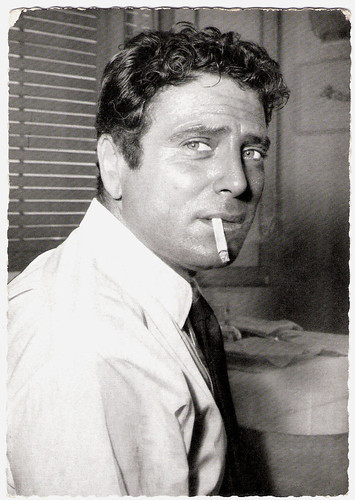
German postcard by Filmbilder-Vertrieb Ernst Freihoff, Essen, no. 224. Retail price: 10 Pfg. Photo: G.B. Poletto / Ufa. Raf Vallone.

Italian postcard by Bromofoto, Milano, no. 1643. Photo G.B. Poletto / Titanus. Nino Manfredi in Audace colpo dei soliti ignoti/Fiasco in Milan (Nanni Loy, 1960).

Italian postcard by Bromofoto, Milano (Milan), no. 1807. Photo: G.B. Poletto / Titanus. Mario Girotti (Terence Hill) in Lazzarella (Carlo Ludovico Bragaglia, 1957).
Sources: Giulia Della Torre, Riccardo Della Torre (Dizionario Biografico degli Italiani – Italian), and IMDb.

German postcard by Universum-Film Aktiengesellschaft (UFA), Berlin-Tempelhof, no. CK-174. Retail price: 30 Pfg. Photo: G.B. Poletto / UFA. Marisa Allasio

Yugoslavian postcard by NPO, no. G5. Photo: G.B. Poletto. Gina Lollobrigida and donkey in Pane, amore e fantasia /Bread, Love and Dreams (Luigi Comencini, 1953).

Italian postcard in the I Carabinieri nel Cinema series. Photo: Titanus. Photo: G.B. Poletto. Roberto Risso, Gina Lollobrigida, and Vittorio De Sica in Pane, amore e gelosia/Bread, Love and Jealousy (Luigi Comencini, 1954).

Italian postcard by Casa Editr. Ballerini & Fratini, Firenze (B.F.F. Edit.), no. 3197. Photo: G.B. Poletto. Titanus. Antonio Cifariello in Pane, amore e...../Scandal in Sorrento (Dino Risi, 1955).

German postcard by UFA, Berlin-Tempelhof, no. 58. Retail price: 50 Pfg. Photo: G.B. Poletto / UFA. Martine Carol
Poor But Beautiful
Giovanni Battista Poletto was born in Rome in 1915. His parents were Vittorio Poletto, originally from Rovigo, and Assunta Battistini, from Cesena. He attended elementary school in the Pinciano district, where he was born, and once he obtained a middle school license, he decided not to continue his studies.
In the 1930s he enrolled in a course for aviation photographers organised by the Air Force Ministry. Shortly thereafter, he began his career as a professional photographer at Ala Littoria, taking aerial photographs. During the war, he served in the aeronautics as a laboratory photographer. Transferred to Volta Mantovana, in 1943, he met the eighteen-year-old Paola Panizza, whom he married in 1946. Four children were born from the wedding: Donatella (1947), Carlo (1949), Laura (1953), and Alessandra (1958).
Once back in Rome with his wife, Poletto abandoned aerial photography in favour of reportage photography. He began to collaborate with such magazines as L’Europeo and Oggi and started his first contact with the world of cinema. In 1949 he met Roberto Rossellini, who wanted him as a set photographer of Stromboli, terra di Dio/Stromboli (Roberto Rossellini, 1950), starring Ingrid Bergman.
In 1950, the producer Goffredo Lombardo, head of one of the major studios, Titanus, offered him an exclusive contract, which committed him to be the still photographer for all the films produced by the studio. To cope with the growing amount of work, Poletto was forced to significantly expand the number of employees of his Agenzia Poletto - opened just before in the centre of Rome, in Via della Mercede 16 - which came to count 19 employees including photographers and printers.
For 'G.B. Poletto' - as he used to sign his photos - the first half of the 1950s was very intense on a professional level, with an average coverage of eleven sets per year. In 1951, he worked twice with the director and writer Mario Soldati, for the comedy O.K. Nerone/O.K. Nero (1951) starring Walter Chiari and Silvana Pampanini, and for È l'amor che mi rovina/It is love that ruins me (1951), with Chiari and Lucia Bosé.
In 1952, he photographed two episodes of Les sept péchés capitaux/The Seven Deadly Sins: L'Envie/Envy by Roberto Rossellini, and L'Avarice et la colère/Avarice and Anger by Eduardo De Filippo. With De Filippo, he also worked in the same year in the comedies Marito e moglie/Husband and wife (1952) and Ragazze da marito/Married Girls (1952).
The following year, he witnessed the directorial debut of Antonio Pietrangeli with Il sole negli occhi/The sun in his eyes (1953), for which the director earned a Silver Ribbon. He also made the still photos of Un marito per Anna Zaccheo/A husband for Anna Zaccheo (1954) by Giuseppe De Santis with whom he also collaborated for Uomini e lupi/Men and Wolves (Giuseppe De Santis, 1957) and Roberto Rossellini's Viaggio in Italia/Journey to Italy (1954), with whom he had built up mutual esteem and friendship in the meantime.
He resumed the sets of Pane, amore e fantasia/Bread, Love and Dreams (Luigi Comencini, 1953) with Vittorio De Sica and Gina Lollobrigida, and Poveri ma belli/Poor But Beautiful (Dino Risi, 1957), starring Marisa Allasio, Maurizio Arena, and Renato Salvatori. Of these popular 'sagas', he photographed all the sequels too.
Poletto also collaborated with Michelangelo Antonioni for La Signora senza Camelie/The Lady Without Camelias (1953), of which the photos depicting the young protagonist, Lucia Bosé, hover in memory.
In the same year, he worked on the set of Quand tu liras cette lettre/When You Read This Letter (Jean-Pierre Melville, 1953) with Juliette Gréco, and of the anthology film Siamo donne (Gianni Franciolini, Alfredo Guarini, Roberto Rossellini, Luchino Visconti, Luigi Zampa, 1953), starring Alida Valli, Ingrid Bergman, Isa Miranda, and Anna Magnani, of which he did all five episodes.
At the same time, he was on the sets of important authors of genre films: Raffaello Matarazzo, a prolific director of such melodramas as Chi è senza peccato..../Who is without sin ... (1952) and Torna!/Tears of Love (1954), and comedy directors like Camillo Mastrocinque for Attanasio, cavallo vanesio/Athanasius, the vain horse(1953) and Steno for Mio figlio Nerone/My son Nero (1956).

Italian postcard by Casa Editr. Ballerini & Fratini, Firenze, no. 3407. Photo: G.B. Poletto / Paramount / Titanus. Marisa Allasio in Poveri ma belli/Poor but beautiful (Dino Risi, 1957).

Italian postcard by Casa Edit. Ballerini & Fratini, Firenze (B.F.F.), no. 3579. Photo: G.B. Poletto / Titanus. Alessandra Panaro.

Italian postcard by B.F.F. Edit. (Casa Editr. Ballerini & Fratini, Firenze), no. 3580. Photo: G.B. Poletto / Titanus. Lorella De Luca.

Italian postcard by B.F.F. Edit. (Casa Editr. Ballerini & Fratini, Firenze), no. 3712. Photo: G.B. Poletto / Titanus. Renato Salvatori in Poveri Millionari/Poor Millionaires (Dino Risi, 1959).

Italian postcard by Casa Editr. Ballerini & Fratini, Firenze, no. 3713. Photo: G.B. Poletto / Titanus. Maurizio Arena in Poveri milionari/Poor Millionaires (Dino Risi, 1958).
Federico Fellini
G.B. Poletto was among the photographers who contributed to launching Sophia Loren as one of the main divas of Italian cinema: the set photos of Il segno di Venere/The Sign of Venus (Dino Risi, 1955) and the promotional photos of Peccato che sia una canaglia/Too Bad She's Bad (Alessandro Blasetti, 1955), are still today among the most recognisable shots of the actress.
Titanus was always careful to diversify its offer, producing films by Rossellini, Federico Fellini, Luchino Visconti, high budget films in French and American co-production, but also Italian comedies, melodramas, adventure films, Peplums. This mixture of author films and more widely consumed films reverberated on Poletto's work and represented a constant in his work, especially in the second part of his career.
From the mid-sixties, he often photographed the 'Musicarelli', hugely popular musical comedies starring the most famous pop singers of the time. Among these are Non son degno di te/I am not worthy of you (Ettore Maria Fizzarotti, 1965) with Gianni Morandi, and Non stuzzicate la zanzara/Don't whet the mosquito (Lina Wertmüller, 1967), starring Rita Pavone.
In his professional career, he also met Alberto Lattuada, with whom he collaborated for La spiaggia/Riviera (Alberto Lattuada, 1954) with Martine Carol, and Scuola elementare/Elementary school (Alberto Lattuada, 1955). The relationship with the Milanese director continued in 1960 with Lettere di una novizia/Letters by a Novice (Alberto Lattuada, 1960) and I Dolci decanni/Sweet Deceptions (Alberto Lattuada, 1960). The protagonist of this last film was Catherine Spaak, in the role of a teenager in love with a man much older than her. The film caused a sensation and was subjected to a very long censorship odyssey until 1964 when Lattuada and the producer Lombardo were acquitted of the accusation of obscenity.
In one of his few interviews, Poletto underlined how in Italy, unlike what happened in American cinema, the photographer was called to simultaneously cover multiple roles: to produce the promotional material of the film (envelopes for the press, posters) he had to faithfully resume what had been shot by the camera, preserving its angle of observation, and at the same time had to "document the birth of the film by shooting the director, the actors, the technicians at work or in moments of pause".
The 'still photography', as it was commonly understood, therefore constituted only a part of the photographer's overall work, not including the less quoted 'set photography' which left him more expressive freedom and which dissociated himself from the idea of cinema as a machine producing illusions "revealing 'the artifice'". Initially, the set, as the main place of the cinematographic creation, was not crossed by the photographer's eye. Later, Poletto began to show the space in which the film was physically made to further increase its charm and the power of seduction.
His colour images of Giulietta degli spiriti/Juliet of the Spirits (Federico Fellini, 1965) are famous. Poletto, widening the frame, shows the 'trick' hidden by the camera: the crane that supports the swing on which Sandra Milo swirls. He made photos of various kinds of sets, but it is clear that his gaze was mainly - and not only for evident advertising purposes - to the actors, the directors, and the relationship that was born between them during filming.

Italian postcard by B.F.F. Edit., no. 3166. Photo: G.B. Poletto /Titanus. Richard Basehart in Il bidone/The Swindlers (Federico Fellini, 1955).

German postcard by Rüdel-Verlag, Hamburg-Bergedorf, no. 2141. Photo: G. B. Poletto / J. Arthur Rank Film. Jean Marais in Le notti bianche/ White Nights (Luchino Visconti, 1957).

German postcard by Ufa, Berlin-Tempelhof, no. FK 3486. Photo: G.B. Poletto. Marcello Mastroianni and Maria Schell in Le notti bianche/ White Nights (Luchino Visconti, 1957).

German postcard by Ufa, Berlin-Tempelhof, no. FK 3515. Photo: G.B. Poletto / Ufa. Elizabeth Taylor.

German postcard by Ufa/Filmfoto, Berlin-Tempelhof, no. FK 3476. Photo: G.B. Poletto. Marisa Allasio.
The Leopard
Giovanni Battista Poletto himself told how the two masters Luchino Visconti and Federico Fellini related with him on the set in a totally different way: how much the one was inclined to give him all the space and time necessary to take the photos, so much the other was also annoyed by the only 'click' of the machine (despite the invention of the 'blimp' had significantly attenuated the click noise).
He worked with the Rimini director in Il bidone (Federico Fellini, 1955), with Richard Basehart and Broderick Crawford, and in Roma/Rome (Federico Fellini, 1972), an autobiographical tale in which Gore Vidal and Anna Magnani appear, in her latest film appearance. It is no coincidence that her images were selected for an exhibition dedicated to the actress in the Palazzo Valentini, Rome in 2008.
The relationship with Luchino Visconti was also intense: from Siamo donne to the masterpiece Il gattopardo/The Leopard (Luchino Visconti, 1963), the sum of his professional career. Precisely on this particularly long and demanding set, he chose to bring the family with him, although he usually kept work separate from his private world. In 2013, the photos of the making of the film were exhibited on the occasion of an important exhibition organised to celebrate the fiftieth anniversary of the film in Palazzo dei Normanni, Palermo.
1963 was a year of transition: the Titanus, due to the enormous production costs of Sodoma and Gomorrah (Robert Aldrich, 1962) and Il Gattopardo, went bankrupt as a production company continuing to deal only with the distribution.
The most important phase of Poletto's career therefore ended, coinciding with the heyday of Italian cinema, during which he was able to photograph works by authors such as Francesco Maselli (Gli sbandati/Abandoned, 1955), Mario Monicelli (Un eroe dei nostri tempi/A Hero of Our Times, 1955; Risate di gioia/The Passionate Thief, 1960), Vittorio De Sica (Il tetto/The Roof, 1956), Valerio Zurlini (Estate violenta/Violent Summer, 1959; La ragazza con la valigia/Girl with a Suitcase, 1961; Cronaca familiare/Family Diary, 1962), Nanni Loy (Audace colpo dei soliti ignoti/Fiasco in Milan, 1959; Le quattro giornate di Napoli/The Four Days of Naples, 1962), Francesco Rosi (I magliari/The Swindlers, 1959), Elio Petri (L'assassino/The Assassin, 1961; I giorni contati/His Days Are Numbered, 1962), Ermanno Olmi (Il posto/The Job, 1961), and Dino Risi (Operazione San Gennaro/The Treasure of San Gennaro, 1966).
His professional career seemed in some ways to follow the fate of still photography: it experienced its peak period in the 1950s and early 1960s and its progressive decline between the late 1960s and early 1970s, with the growing popularity of the television and the consequent decrease in budgets for cinema. On the contrary, the activity of his printing laboratory continued to be intense, often allowing him to indulge his natural inventiveness: in 1968 he was asked for a poster to advertise C'era una volta il West/Once Upon a Time in the West (Sergio Leone, 1968) and, for realising it, after a meticulous preparation as it was in his style, he created a special enlarger. He had repeatedly expressed his displeasure at not having followed in the footsteps of his maternal grandfather, an inventor of machinery.
In the second phase of his career, he still filmed genre films (Musicarelli in the first place), but he also documented the sets of some significant works such as Io la conoscevo bene/I knew her well (Antonio Pietrangeli, 1965) with Stefania Sandrelli, the Spaghetti Western I lunghi giorni della vendetta (Faccia d'angelo)/Days of Vengeance (Florestano Vancini, 1967) starring Giuliano Gemma, Romeo and Juliet (Franco Zeffirelli, 1968), and La prima notte di quiete/Indian Summer (Valerio Zurlini, 1972), starring Alain Delon.
The last film he worked for was the acclaimed comedy-drama Pane e cioccolata/Bread and Chocolate (Franco Brusati, 1973), starring Nino Manfredi, his close friend. Until the end, he continued to devote himself full time to his photographic laboratory, where his daughter Donatella had started working since 1966. Giovanni Battista Poletto died in Rome in 1988. He was 72.

Small Czech collectors card by Pressfoto, Praha (Prague), 1965, no. S 101/6. Photo: G.B. Poletto. Claudia Cardinale, Paolo Stoppa, and Alain Delon in Il gattopardo/The Leopard (Luchino Visconti, 1963).

Czech postcard by UPTF / Pressfoto, Praha (Prague), no. C 198, 1965. Photo: G.B. Poletto. Alain Delon, Claudia Cardinale, and Burt Lancaster in Il gattopardo/The Leopard (Luchino Visconti, 1963).

Czech postcard by Pressfoto, Praha (Prague). Photo: G.B. Poletto. Alain Delon and Claudia Cardinale in Il gattopardo/The Leopard (Luchino Visconti, 1963). Collection: Carla Bosch.

Vintage card. Photo: G.B. Poletto. Alain Delon and Claudia Cardinale in Il gattopardo/The Leopard (Luchino Visconti, 1963).

East-German postcard by VEB Progress Film-Vertrieb, Berlin, no. 1021, 1959. Retail price: 0,20 DM. Photo: G.B. Poletto, Rome. Sylva Koscina

German postcard by Filmbilder-Vertrieb Ernst Freihoff, Essen, no. 224. Retail price: 10 Pfg. Photo: G.B. Poletto / Ufa. Raf Vallone.

Italian postcard by Bromofoto, Milano, no. 1643. Photo G.B. Poletto / Titanus. Nino Manfredi in Audace colpo dei soliti ignoti/Fiasco in Milan (Nanni Loy, 1960).

Italian postcard by Bromofoto, Milano (Milan), no. 1807. Photo: G.B. Poletto / Titanus. Mario Girotti (Terence Hill) in Lazzarella (Carlo Ludovico Bragaglia, 1957).
Sources: Giulia Della Torre, Riccardo Della Torre (Dizionario Biografico degli Italiani – Italian), and IMDb.
No comments:
Post a Comment